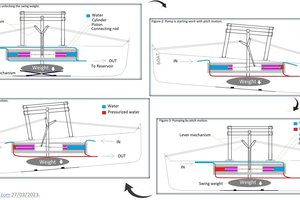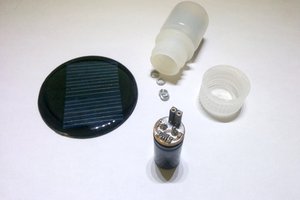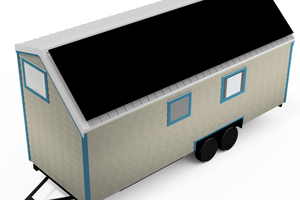I believe most water heaters are configured to heat and store water at approximately 120 degrees F (49C). What if instead of 120 degrees we heated and stored that water at 180 degrees F (82C). With a 60 gallon water heater holding 227kg of water a rise of 33 degrees C equates to 31,000,000 Joules of energy or about 8.7kWh equivalent electrical energy. A Tesla powerwall costing $3000 can only store 6.4kWh of energy.
I propose building a relatively simple circuit that could take standard incoming home power in addition to power from an alternative source such as wind or solar to power the lower element of a standard hot water heater. The upper fast recovery element would not be changed. Any time sufficient alternative energy was available and the heater had not reached to top limit the heater would be powered from the alternative source. In the event the water temperature fell below a preset threshold of say 120F and there wasn't sufficient alternative energy available at the time the heater would be powered from standard grid power.
To prevent scalding from 180F water that might be stored in the tank a mixing valve would need to be installed that would mix cold water with the hot water to reduce the temperature to a set level of 120-140F.
The advantages of this concept are:
- Circuitry could be build at a relatively low cost 100-200 US dollars.
- Mixing valves are already an off the shelf component.
- Provides a great deal of storage capacity using hardware that is already deployed.
- Most of the safety features required are already installed on the water heater ( overpressure prevention ).
- With input provided by the power company regarding current cost of electricity the heater could easily take advantage of over production of alternative power that has been fed into the grid instead of just onsite wind or solar installations.
- Could easily work with the power company's current on-demand system to instruct to heaters to consume power if possible instead of just turn off; this could help with grid stabilization.
Given that there are literally millions of water heaters already deployed we could already have the potential of several gigawatt hours of energy storage available with very little monetary and environmental costs needed to utilize it.
There is no point storing energy in batteries if you are just going to later convert it to heat. Might was well store the energy as the heat you need. Once this is done, only then does it make sense to really start storing the energy in expensive batteries for general use.
 Shawn
Shawn
 Md. Moniruzzaman
Md. Moniruzzaman
 seantimothylutz
seantimothylutz
 atomkemp
atomkemp
 isaacporras
isaacporras